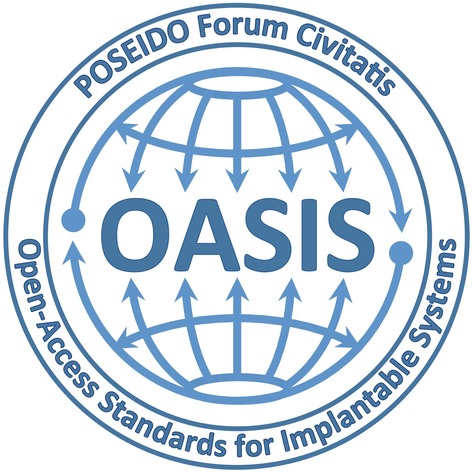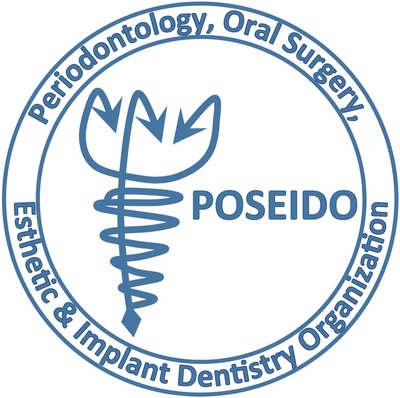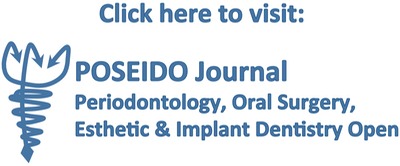
The OASIS Forum (Open-Access Standards for Implantable Systems) is an international informal working group gathering ISO Experts of the ISO/TC106/Dentistry commissions, in order to develop new international standards for implantable systems and to promote their use in our professional community.
The objectives of the Forum are interconnected:
- to facilitate the global cooperation between the delegations of all the countries participating to the ISO works about implantable systems, in order: to propose, develop, discuss and finally submit projects of standards all together in synergy; to allow a faster and more efficient development and application of new standards without delays;
- to support international scientific collaborations between the Experts, in order to discuss and gather experimental data to support accurate experimentally-driven and validated standards;
- to promote interactions between the Experts and the community of professionals through the POSEIDO network, to develop timely projects and to educate colleagues and practitioners about new standards.
The OASIS Forum has been designed and funded by the POSEIDO Foundation in order to remain completely independent from the commercial pressures and lobbying. The resources of the Foundation can be allocated by the Board of Directors in the form of research grants for the development of outstanding projects of standards.
Rector of the Forum:
Prof. Claudio Fernandes (Brazil), ISO Head Delegate of the Brazilian National Commission of Standardization for Dentistry (ABNT CE26.050 - Dentistry), Expert to the ISO TC106/SC8 - Dental Implants, Liaison Officer of the TC106/SC8 - Dental Implants with SC9 - Dental CAD/CAM, Chairman of the Brazilian National Commission of Standardization for Dental Implants (ABNT CE26:050.02).
Coordinator of the Forum:
Prof. David M. Dohan Ehrenfest (France), Expert to the ISO TC106/SC8 - Dental Implants, Expert to the French National Commission of Standardization for Dental Implants (S91O), Expert to the European Commission (Dentistry Section).
Scientific Committee (by alphabetical order):
Prof. Asbjørn Jokstad, Department of Clinical Dentistry, Faculty of Health Sciences, UiT The Arctic University of Norway, Tromsø, Norway.
Prof. Yeong-Joon Park (South Korea), Expert to the ISO TC106/SC2 - Prosthodontic Materials - and SC1/WG2 - Endodontic materials, Head of the Korean National Commission of Standardization for Prosthodontic Materials (KATS TC106/SC2).
Prof. Adriano Piattelli, Department of Oral Pathology and Medicine, School of Dentistry, University of Chieti-Pescara, Chieti, Italy.
Prof. Nelson R. Pinto, Department of Periodontology, Faculty of Odontology, University of the Andes (UANDES), Santiago, Chile.
Prof. Hom-Lay Wang, Endowed Collegiate Professor of Periodontics, Director of Graduate Periodontics, Department of Periodontics and Oral Medicine, School of Dentistry, University of Michigan, Ann Arbor, MI, USA.
Prof. De-Rong Zou, Head of the Department of Stomatology, Shanghai Sixth People’s Hospital, Shanghai Jiao Tong University, Shanghai, China.
To be updated soon.
Currently, the group is working on 6 projects, particularly:
1/ Implant Surface Identification (ISI) Standard system
This project of international standard describes a method and terminology of characterization, codification and classification in an identification card of the chemical and morphological characteristics of dental implant surfaces. The ISIS protocol was developed to serve industrial, experimental, communication and health policy objectives, by offering a method of evaluation and a terminology of communication between all stakeholders of this field, including manufacturers, scientists, final users and health policy and control administrations. This project is based on several publications, particularly the series of articles describing the ISIS method in the POSEIDO Journal March 2014 (Click here to see the issue).
2/ Degradation and Ion Release of Dental Implant Surfaces and Systems (DIRDISS)
This project of international standard should describe a method for the evaluation of the Degradation and Ion Release of Dental Implant Surfaces and Systems (DIRDISS). This method should serve industrial and health policy objectives, by offering as standard scale for the evaluation, comparison and control of the DIRDISS of various systems.


